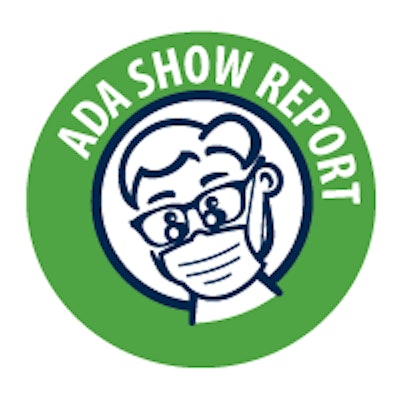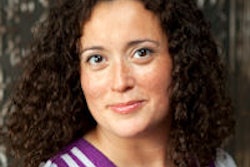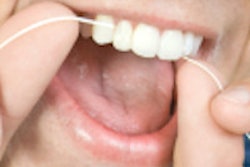
The plethora of consumer choices in the toothpaste aisle of the average local grocery store is often fodder for stand-up comedians or anyone reminiscing about simpler times. If that's overwhelming, they'd be shocked by the vast array of over-the-counter (OTC) products available on the exhibition floor at last week's ADA annual meeting in New Orleans.
In an ADA 2013 talk entitled "The Myths, Legends, and Realities of Over-the-Counter Products," presenter Judy Bendit, RDH, sees necessity in the toothpaste aisle and opportunity on the exhibition hall floor. A dental practice's staff -- particularly hygienists -- has to know what products are available so they can guide patients to the ones they need.
"There isn't one product for everybody," Bendit said. "There are lots of options because we need lots of options."
The right questions
It starts with asking the right questions.
"When hygienists do their review of home care, that's the opportunity," Bendit said during a follow-up interview with DrBicuspid.com. "If the patient comes in and all of a sudden they're starting to have a whole lot of decay, the question needs to be 'What exactly are you using?' Not 'Do you use fluoride toothpaste,' which is typically what's on a survey or risk assessment tool, because people just say, 'Yeah.' "
“Going to meetings and talking to companies is critical.”
These patients could be using toothpaste without fluoride, or worse, a young patient could be brushing with Warheads candy toothpaste, Bendit noted. With a pH 3.2, it can be harmful to enamel if children are even playing at brushing with it.
Bendit believes that it is a responsibility of hygienists to have the ability to recommend the right product to each patient. The toothpaste aisle can be confusing for consumers, and clinicians have an opportunity to learn about products at dental meetings so they can guide their patients appropriately.
One of Bendit's goals during her session was to teach clinicians how they can build their product knowledge. Growing up in a household of dental professionals, "I didn't have to buy a toothbrush until I was 28," she told her audience. "Then it blew my mind. $5 for a toothbrush? I couldn't believe how expensive they were. So it's worth trying them. Going to meetings and talking to companies is critical."
It is a point worth making, based on her audience's responses during the session.
"A question I have for all of you: How many have had time to see the [exhibition hall] floor?" Bendit asked the attendees. A scattered few hands went up in an audience of several hundred. The session took place on Friday morning, the second day of the meeting.
"How many plan on it?" she continued. Roughly half of the room raised their hands. "Check it out," she advised. "Here at the conventions, you have the opportunity to go around and try these products."
According to Bendit, trying products is part of evidence-based dentistry and decision-making. When a new product comes out, she'll learn about its features and give samples to patients who meet its target market to test them. "Try them on yourself, on your kids, and patients. Figure out which ones you like," she said. "It's nice when you have that experience, and you can say that 'This is the product I like and this is why' and in addition to that, there's all this research that substantiates what I'm saying."
She elaborated her point during a subsequent interview with DrBicuspid.com.
"A premise that I drove home was about getting people to look at the research and to figure out whether products are good for their patients or not," she said. "We have different needs, and we have to connect our patients with the right products."
Knowing where to find the research substantiating product efficacy is an important part of the process. "We all Google things, but when you need evidence, research, you need to go to the right places and it's typically not Google," she explained. "Have you ever Googled 'fluoride?' You'll get all kinds of crazy sites." Instead, she advised using Cochrane Reviews and the ADA's website, and Google Scholar is a useful tool for searching for systematic reviews or other research.
Product manufacturers also can be valuable resources.
"Go to the company directly," Bendit advised. "When that denture cream issue came up and my husband, a physician, had four older ladies yelling at him in his office that day, I called the manufacturer directly and asked them what was going on."
The company explained that the zinc illness associated with denture cream was a result of overuse, and a warning, as well as an explanation, could easily be passed along to patients.
Retail representatives can be valuable resources as well, something that many in the audience may not have considered. About half of the room responded when Bendit asked who had a relationship with their retail representative.
"Unfortunately, a lot of hygienists never develop that relationship with that rep because they're busy and they never think that it's important enough," Bendit said. "Those are go-to people when you have questions about gloves or prophy angles."
While retail representatives are typically in the practice to see the office manager, Bendit had suggestions for ways to establish a relationship. "I let them know that I can't see them every time, but bring me a bagel once or twice a year, I'll come in early or give up my lunch to do 'lunch and learns.' "
The last piece of the puzzle is making sure the patient can obtain the products being recommended.
"Some offices just don't want to dispense products," Bendit said. So she communicates with the local pharmacy, especially if it isn't stocking a product she likes. "I'll go and tell the pharmacist what I'm recommending and ask that they get it," she said. "They typically will. You have to be careful with the 'big box' stores -- Walmart probably won't do that -- but a lot of times a CVS or a Walgreens will do that for me."



















